
All categories
Featured selections
Trade Assurance
Buyer Central
Help Center
Get the app
Become a supplier

(4092 products available)
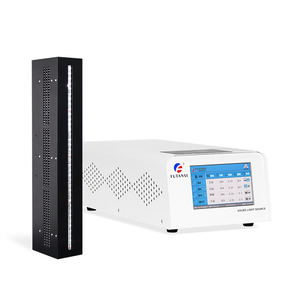

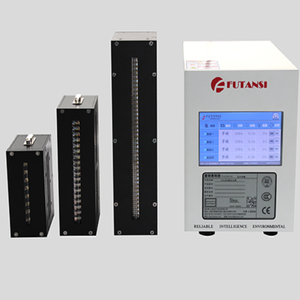

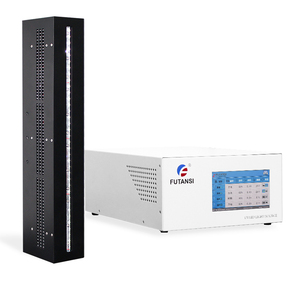
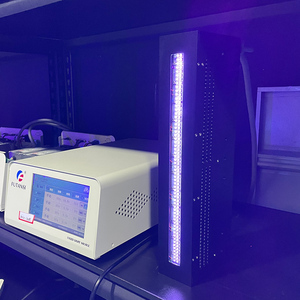








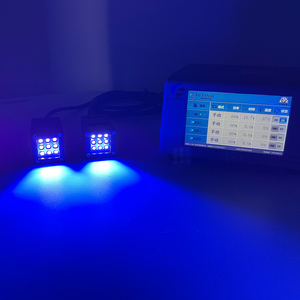
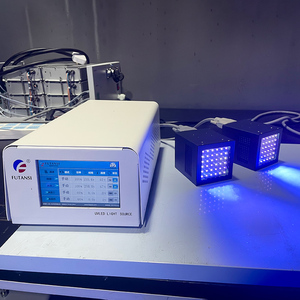

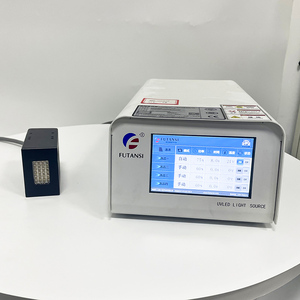
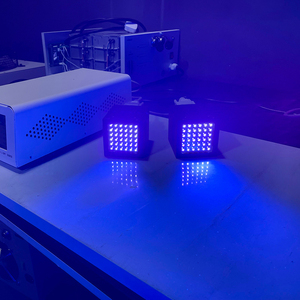
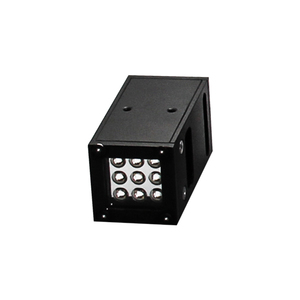

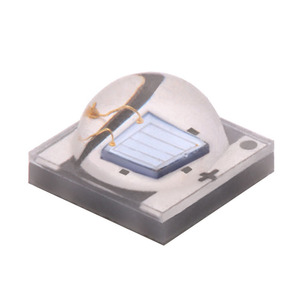

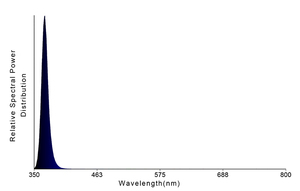




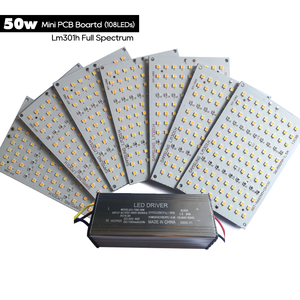





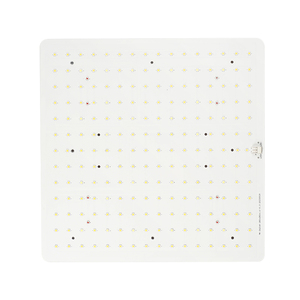
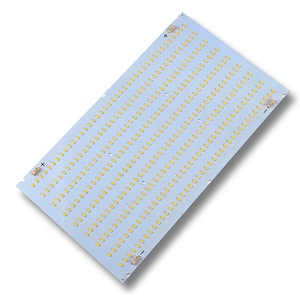

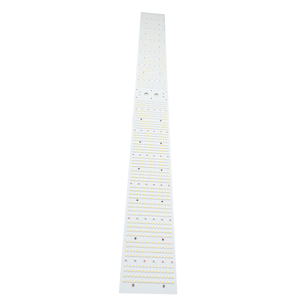







A UV LED PCB (Printed Circuit Board) is a crucial component in electronic devices that utilize ultraviolet (UV) light emitting diodes. These PCBs provide the electrical connections and mechanical support for UV LEDs to function. UV LED PCBs are designed to efficiently dissipate heat generated by the LEDs and provide electrical connections. They also offer a substrate on which the LEDs and other components can be mounted. UV LED PCBs are available in various types, as discussed below:
Metal Core PCBs (MCPCB)
Metal Core PCBs (MCPCB) are popular for UV LED applications. They have a metal substrate like aluminum or copper. This substrate provides better heat dissipation than standard PCBs. MCPCBs help to protect the UV LEDs from overheating. They do this by dissipating heat efficiently. This makes them suitable for applications that require high power LEDs. For instance, UV curing devices and industrial printers.
Flexible PCBs
Flexible PCBs are made from pliable materials. These include polyimide or PET (Polyethylene Terephthalate) films. They are lightweight and can be bent or twisted. Flexible PCBs are suitable for compact designs. They also fit into tight spaces where rigid PCBs cannot. These PCBs are used in wearable devices that employ UV light for various functions. For instance, UV sterilization or UV-induced tanning.
Rigid-Flex PCBs
Rigid-Flex PCBs combine both rigid and flexible circuits. They have rigid sections and flexible areas. Rigid-Flex PCBs provide structural integrity where rigidity is needed. They also allow flexibility in other parts of the device. These PCBs are useful in complex devices with multiple functionalities. An example is UV LED-based medical devices. Such devices require sterilization of medical tools that can be made with Rigid-Flex PCB technology.
High Thermal Conductivity PCBs
High Thermal Conductivity PCBs are non-metallic. However, they are designed with special materials that have high thermal conductivity. Materials such as ceramic-filled epoxy or thermally conductive dielectrics are used. These PCBs are lighter than MCPCBs. They also provide efficient heat dissipation without the need for a metal core. High Thermal Conductivity PCBs are suitable for applications where weight is a concern. They are also useful where a thicker metal substrate is not feasible.
High Efficiency and Long Lifespan
The UV LED PCBs are much more energy efficient as opposed to traditional mercury-based UV LEDS. This means that less energy is wasted and more of it is converted into UV light. This UV LED PCB also has a longer lifespan than traditional UV LED PCBs. The LEDs can have several thousand hours of use before they need to be replaced, and this decreases the need for replacements significantly and also cuts down on maintenance costs.
Low Temperature Emission
These UV LED PCBs emit very little heat when they are operating. This means that the surrounding materials and the LED itself won't overheat or be damaged. The low temperature emission also means that there will be less need for additional cooling systems, which saves on costs and energy.
UV LED PCB Has A Very Compact Design
These boards are designed to be small and compact, which allows them to be integrated into devices and systems that have limited space. Their design allows for more flexibility when it comes to device design and system architecture.
Versatile Applications
UV LED PCBs can be used across many industries, such as medicine, electronics, beauty, and many more. They are used in applications such as UV curing, counterfeit detection, and sterilization.
Improved Safety
UV LED PCBs are safer than traditional PCB because they use LEDs that don't emit high levels of UV-C radiation. The UV-C radiation is dangerous to human skin and eyes. These LED PCBs also use no mercury, which is a dangerous substance and poses serious health risks.
PCB Adaptability and Customization
The UV LED PCBs can be adapted and customized to meet the various requirements of different applications. This includes changing the size and board layout and varying the number of UV LEDs that are placed on a board.
The application of UV LED PCB has grown across various industries due to its efficacy, compactness, and performance. Some of the common usage industries include:
Electronics
UV LED PCBs are extensively used in electronic devices due to their high heat dissipation and compactness. They are used in smartphones, tablets, laptops, and wearables. The PCBs improve the functionality of these electronic devices, enhancing their blue light and UV light emissions.
Medical Devices
UV LED PCBs are used in various medical devices, including sterilization equipment, phototherapy devices, and medical imaging systems. The UV LEDs provide a powerful and efficient means of sterilizing medical instruments, killing bacteria, viruses, and other pathogens. They are also used in dermatology and ophthalmology phototherapy treatments.
Agriculture
UV LED PCBs are used in indoor farming and greenhouse applications. The UV lights promote plant growth and development by accelerating photosynthesis. They are also used for pest and fungus prevention in plant growth.
Curing
UV LED PCBs are widely used in the curing process of inks, adhesives, and coatings in printing and manufacturing. The UV LEDs cure inks and coatings instantly, improving the printing process's efficiency.
Consumer Electronics
UV LED PCBs are used in various consumer electronic devices, including remote controls, displays, and indicator lights. The UV LEDs are also used in portable UV sanitizers and water purification devices.
Automotive
UV LED PCBs are used in various automotive lighting applications, including headlights, taillights, and interior lighting. The compactness and high heat dissipation properties of the UV LED PCBs make them suitable for use in automotive lighting.
Cosmetics
UV LED PCBs are used in various cosmetic devices, including nail curing lamps and tanning beds. The UV LEDs cure nail gels and polishes quickly and efficiently, making them popular in salons and spas.
Food Processing
UV LED PCBs are used in food processing for disinfection and preservation. The UV lights kill bacteria and pathogens in food, improving food safety and shelf life. The LEDs are also used for curing food coatings and inks.
When considering UV LED PCBs for wholesale, buyers should consider several factors to ensure they choose a product that meets their customers' needs. First, they should look at the wavelength. Different applications require specific UV LED wavelengths. For instance, a wavelength of 365nm is ideal for curing inks and coatings. Therefore, buyers should stock various UV LED PCBs with different wavelengths to cater to the needs of their customers.
Secondly, buyers should consider the power output of the UV LEDs. Higher power outputs result in faster curing times. Therefore, it is a critical factor for customers in the adhesive and coatings industry. Buyers should look for UV LED PCBs with high power output to ensure quick curing and enhanced productivity for their customers.
The typical UV LED PCB thermal management is another important consideration. Effective thermal management ensures optimum UV LED performance and longevity. Buyers should look for PCBs with robust thermal management features such as heatsinks and high thermal conductivity materials.
Additionally, buyers should consider the form factor and flexibility of the UV LED PCBs. Depending on the type of end-use application, customers may require UV LED PCBs in different configurations such as rigid boards and flexible strips. Business owners should ensure they have a UV LED PCB with a different form factor to meet the various customers' needs.
The reliability and lifespan of the UV LEDs are also crucial. Business owners should ensure they have UV LED PCBs with long operational lifespans to minimize replacement costs for their customers. They can determine the reliability of the UV LED by checking the manufacturer’s specifications and reviews.
Finally, buyers should consider the brand reputation and technical support. They should choose a manufacturer with a proven track record in producing quality UV LED PCBs. They can check the reviews and testimonials of the previous clients to get more insight into the product quality. Also, they should look for manufacturers who offer comprehensive technical support to assist them in case of any issues.
Q1: What are the limitations of UV LED PCB?
A1: Some common limitations of UV LED PCBs include; limited depth of cure, adhesive compatibility, UV absorption, and cost. UV LEDs may have a limited depth of cure depending on the resin used. This is because some resins are not optimally formulated for UV LED wavelengths. Additionally, certain adhesives may not be compatible with UV LEDs leading to adhesion issues. Further, the use of UV absorbing materials in the PCB design may limit UV LED effectiveness by reducing light penetration. Lastly, UV LED PCBs may be more expensive due to the need for specialized UV LED curing equipment and formulations.
Q2: What is a UV LED PCB?
A2: A UV LED PCB is a printed circuit board that incorporates ultraviolet (UV) light-emitting diodes (LEDs) technology. These boards are used in various applications such as curing adhesives and coatings, and sterilization and disinfection. UV LED PCBs are preferred over traditional UV lamps because they offer advantages such as lower heat generation, higher energy efficiency, and enhanced versatility.
Q3: What are the advantages of using UV LED PCB?
A3: UV LED PCBs provide several benefits as highlighted below; improved thermal management, higher energy efficiency, and longer lifespan. They also offer a more compact and flexible solution. Additionally, UV LED PCBs provide customizability and enhanced safety.
Q4: Which material is used for LED PCB?
A4: The most common materials used for LED PCBs include; copper, aluminum, and plastics. Copper is widely used in LED PCBs due to its excellent conductivity. Aluminum is also popular for use in LED PCBs providing good conductivity, heat dissipation, and lightweight properties. Some PCBs may also use plastic materials particularly in flexible LED strips.